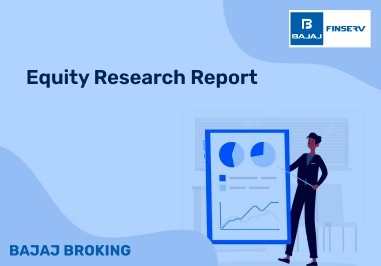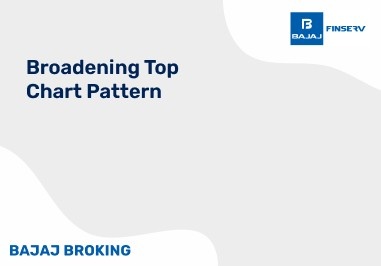Introductory Description:
Learn how to invest in mutual funds effectively with this comprehensive guide. Explore step-by-step instructions, cost insights, and expert strategies to build a diversified investment portfolio with ease through platforms like Bajaj Broking.
Features:
Step-by-step Guide
Cost Breakdown
Investment Strategies
Expert Management
How to Invest in Mutual Funds?
Mutual fund investments may be the perfect choice if you're looking for a way to grow your savings while having a professional manage your investments. These investment vehicles pool money from multiple investors and are managed by experts, making them ideal for those new to the investing world. Although investing in mutual funds might seem daunting initially, it becomes much simpler once you understand the process. In this guide, we'll cover the essential steps on how to invest in mutual funds in India, including how to buy mutual funds online, so you can start investing with confidence.
Steps to Invest in Mutual Funds - 5 Easy Steps
If you're wondering how to invest in mutual funds, these 5 easy steps will guide you through the process:
Step 1: Risk Profiling
Begin by assessing your risk tolerance. It's crucial to understand how much risk you're willing and able to take before making any mutual fund investments.
Step 2: Asset Allocation
Once your risk profile is clear, move on to asset allocation. This step involves dividing your money between asset classes, such as equities and debt, to balance risk and returns.
Step 3: Identify Funds
Now, identify funds that fit your asset allocation strategy. Compare mutual funds by checking their past performance, objectives and suitability for your goals.
Step 4: Choose and Apply
After researching, select the mutual fund scheme that best suits your financial plan. You can then complete the application process online through platforms like Bajaj Broking or offline.
Step 5: Diversify and Monitor
Diversifying your investments and regularly monitoring their performance is vital. Continuous follow-up helps you achieve better results while investing in mutual funds.
By following these steps, you'll be well-prepared to understand how to buy mutual funds and make informed investment decisions.
How to Invest in Mutual Funds Online?
Learning how to invest in mutual funds online is a convenient way to start your mutual fund investments from the comfort of your home. You can do this in two main ways:
Every Asset Management Company (AMC) offers an official website where you can create an account, select your preferred fund and complete your investment. The e-KYC process, which requires only your Aadhaar number and PAN, can be done online. After successful verification, you are ready to begin investing in mutual funds.
Many AMCs and platforms like Bajaj Broking provide mobile applications, allowing you to easily manage your investments. The app lets you invest in various funds, buy or sell units, view your portfolio and track your investments in real-time.
Whether you choose an AMC website or app, both methods simplify how to buy mutual funds and provide you with the flexibility to manage your investments seamlessly.
How Do Mutual Funds Work?
Mutual funds work by pooling money from various investors, which is then managed by an AMC. This collective investment is used to purchase a diversified portfolio of securities such as stocks, bonds or commodities. Professional fund managers handle mutual fund investments, aligning them with the fund’s objectives to enhance growth or returns for investors. If you're wondering how to invest in mutual funds, it's important to know that AMCs charge an expense ratio, which covers the costs of managing your investments.
Investors can earn money through dividends or interest and benefit from capital gains when the value of the investments increases. You can choose between a growth option, where gains are reinvested or a dividend option, which offers regular payouts. If you're learning how to buy mutual funds, platforms like Bajaj Broking provide a convenient way to start. Investing in mutual funds offers diversification, reducing risk while aiming for steady returns, making them an appealing option for both beginners and experienced investors.
Costs of Investing in Mutual Funds
Below are some of the potential costs you may incur when investing in mutual funds:
Expense Ratio
The expense ratio is a key cost when investing in mutual funds, representing the percentage of assets used by AMCs to cover operational expenses like fund management, distribution and administration. This fee is deducted from the fund’s returns, so it’s important to choose funds with a competitive expense ratio to optimise your gains from mutual fund investments.
One-Time Charge/Transaction Charge
When you learn how to invest in mutual funds, you'll come across the transaction charge. This is a one-time fee that some AMCs charge when you make a transaction. Typically, for investments below ₹10,000, no transaction fee is imposed, but this can vary based on the AMC. Always check this charge when you explore how to buy mutual funds.
Exit Load
An exit load is charged when an investor redeems or exits a mutual fund within a specified period. It is a percentage of the Net Asset Value (NAV) and acts as a penalty for early withdrawals. Most AMCs apply this fee to discourage short-term withdrawals from mutual fund investments.
STT
The Securities Transaction Tax (STT) is levied when you sell mutual fund units. This tax is applied to ensure fair market practices in securities trading and is collected by the government. Understanding the STT is crucial as it affects the final returns when investing in mutual funds.
STT for Different Schemes
In India, STT rates vary based on the type of securities and the nature of the transaction. For equity delivery trades, the STT is 0.1% on the turnover for both the buyer and seller. For equity intraday transactions, the STT is 0.025% on the seller's side. Equity futures incur an STT of 0.0125%, while equity options have an STT of 0.0625% on the selling side.
Stamp Duty
Stamp duty is applicable when you purchase, transfer or reinvest mutual fund investments. The duty is a government-imposed tax, levied whether you hold the units in Demat or physical form. This cost impacts how to invest in mutual funds efficiently, so it’s important to factor it in while planning your investments.
Stamp Duty in various cases
Stamp duty is charged at 0.005% on purchases, SIP instalments, switch-ins and dividend reinvestment. For transferring units between Demat accounts or through off-market transfers, a 0.015% duty applies. Platforms like Bajaj Broking provide detailed breakdowns of these costs, which is helpful when learning how to buy mutual funds.
Points to Keep in Mind Before Investing in Mutual Funds
Once your account is set up and you're familiar with the associated costs, the next step in investing in mutual funds is selecting the right fund for your needs.
Here are some key considerations to keep in mind when choosing a mutual fund investment.
Goal of Investing
Setting a clear goal for investing is crucial as it shapes your entire investment strategy. Whether you're aiming to buy a house, save for your child’s education or plan for retirement, defining your goal helps you choose the right mutual fund investments. Knowing how much wealth you want to accumulate and the timeframe you have will guide you in making the right decisions.
Choose the Right Fund for Yourself!
With countless options in the market, selecting the right fund can be overwhelming. It’s essential to align your fund with your investment goals, risk tolerance and affordability. Take your time researching or seeking advice from a financial advisor to find the best fund that meets your needs when learning how to invest in mutual funds.
Consider the Risk Factors
Every mutual fund investment carries some level of risk. If your objective is high returns, equity schemes might be the right fit, but they come with greater risk. If you prefer a safer investment with moderate returns, debt schemes could be more suitable. Balancing risk and returns is essential when deciding how to buy mutual funds.
Keep Your KYC Documents Updated
To make any mutual fund investments, you must comply with the Know Your Customer (KYC) guidelines. This process involves verifying your PAN card and address proof. Ensure your KYC is up to date to start investing in mutual funds through platforms like Bajaj Broking.
Conclusion
In conclusion, despite the variety of investment options available, mutual fund investments remain one of the most practical and effective ways to grow your wealth. One of the key benefits is that your funds are professionally managed by experienced fund managers who conduct thorough market research. Moreover, investing in mutual funds allows for portfolio diversification, reducing risk and enhancing potential returns. Whether you're learning how to invest in mutual funds or exploring how to buy mutual funds, platforms like Bajaj Broking offer the tools and guidance needed to make informed decisions and build a strong investment portfolio.














